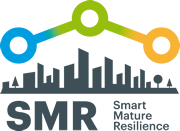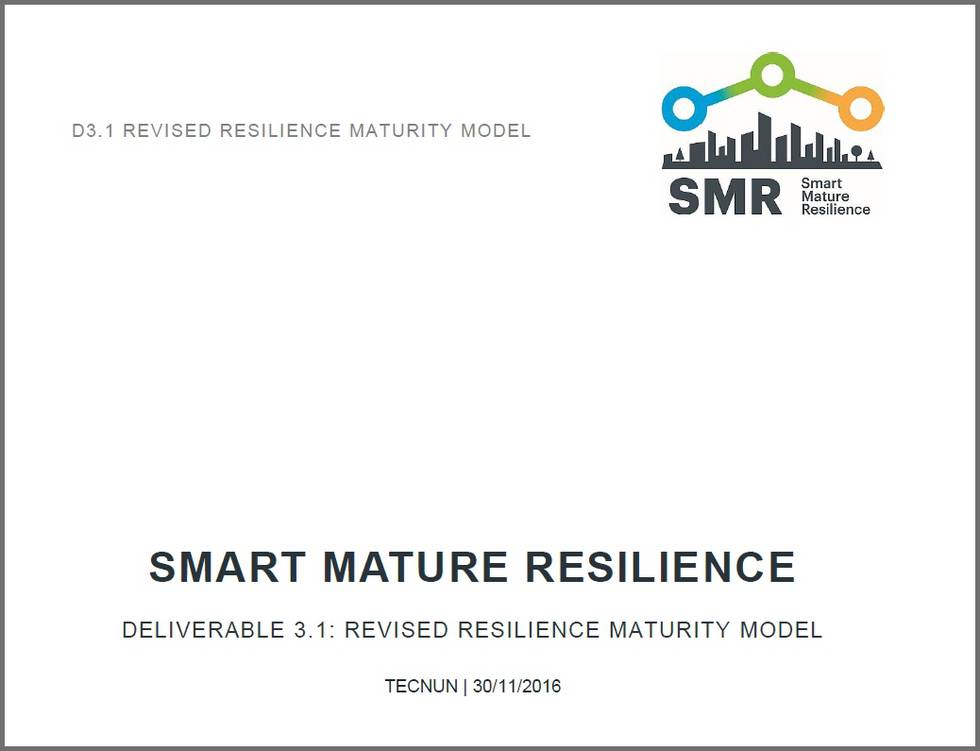Resources
PUBLICATIONS AND DOWNLOADS
Revised Resilience Maturity Model
Date
31/10/2017
Deliverable
D3.1
Lead Partner
TECNUN, University of Navarra
Authors
Josune Hernantes, Leire Labaka, Raquel Gimenez, Patricia Maraña (TECNUN)
Co-Authors
Jose Julio Gonzalez (CIEM)
Vasileios Latinos (ICLEI)
Amy Rankin (LiU)
Igor Pyrko, Susan Howick, Colin Eden (Strath)
Rene Linder (DIN)
The main objective of the SMR project is to develop a Resilience Management Guideline that aims to help in the operationalisation of the resilience building process of European cities. This Guideline integrates five complementary tools that will enhance significantly the CITY1 resilience defined as the ability “to resist, absorb, adapt to and recover from acute shocks and chronic stressed to keep critical services functioning, and to monitor and learn from on-going processes through city and cross-regional collaboration, to increase adaptive abilities and strengthen preparedness by anticipating and appropriately responding to future challenges”.
These five tools are: 1) a Resilience Maturity Model, 2) a Risk Systemicity Questionnaire, 3) a Portfolio of Resilience Building Policies, 4) a System Dynamics Model and 5) a Community Engagement and Communication tool.
This report focuses on the first tool explaining the methodology used to develop it in addition to describe its maturity stages. Literature review was carried out in order to gather information about worldwide approaches regarding resilience. Furthermore, Group Model Building workshops have been arranged during the SMR Project first year to gather the needed requirements for the development of this Resilience Maturity Model from experts. A Delphi process and a validation workshop have also been carried out to further validate the Maturity Model and ensure its replicability and transferability to other CITIES in Europe.
The Resilience Maturity Model comprises five maturity stages to guide cities through the optimal path of building resilience from a strategic approach. Each maturity stage contains a description of the objectives of that maturity stage, the stakeholders that need to be engaged in each stage in addition to a list of policies that should be developed in order to achieve the objectives defined in that maturity stage. A set of indicators have also been identified for monitoring and assessing the performance of these policies and justify their investments on resilience.
Finally, the steps to follow in order to implement successfully the Maturity Model are explained. These steps consist of: 1) Assessment, 2) Strategy development, 3) Strategy implementation and 4) Strategy monitorization.

This project has received funding from the European Union’s Horizon 2020 research and innovation programme under grant agreement no. 653569.

